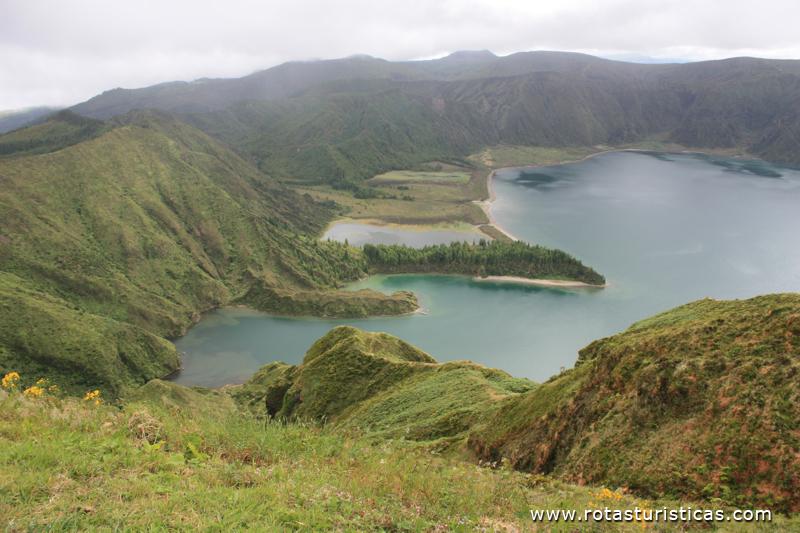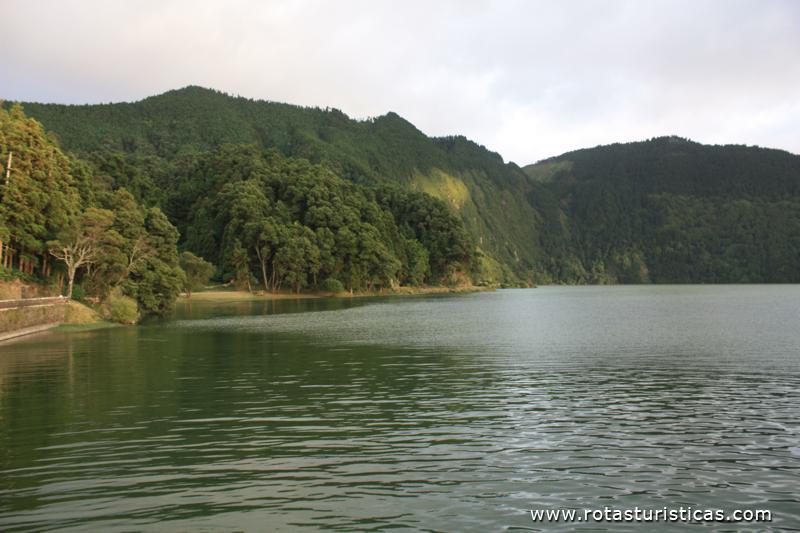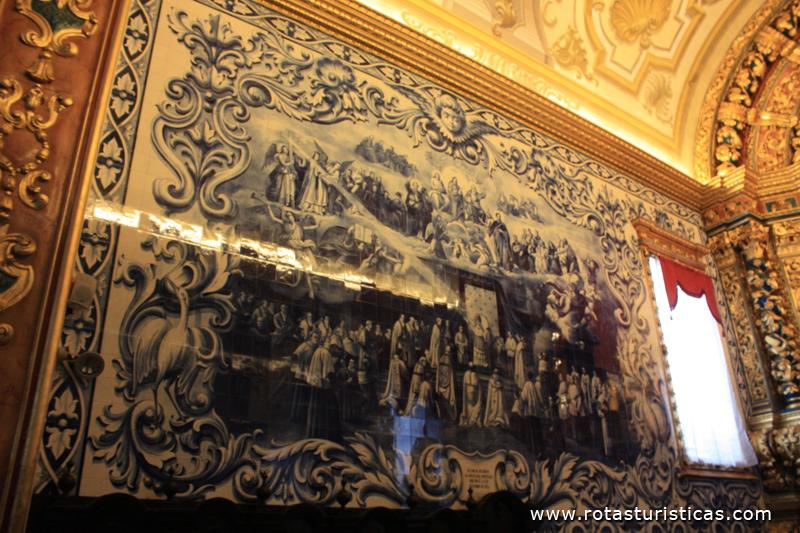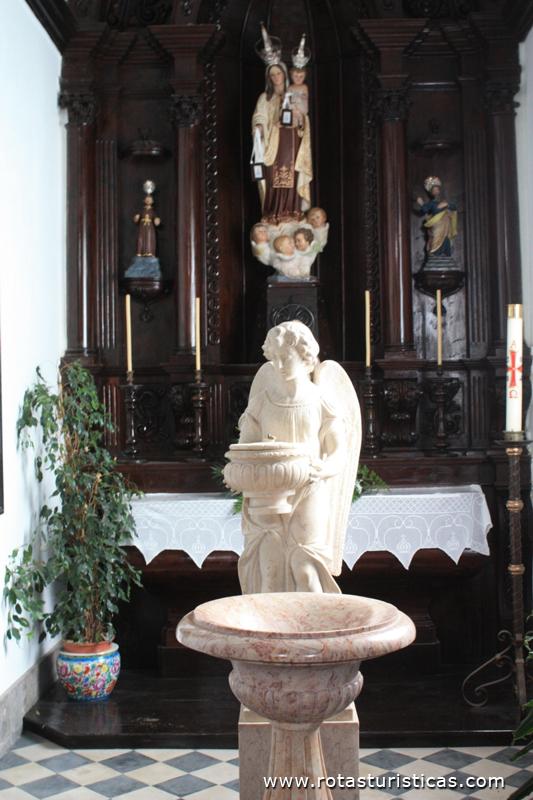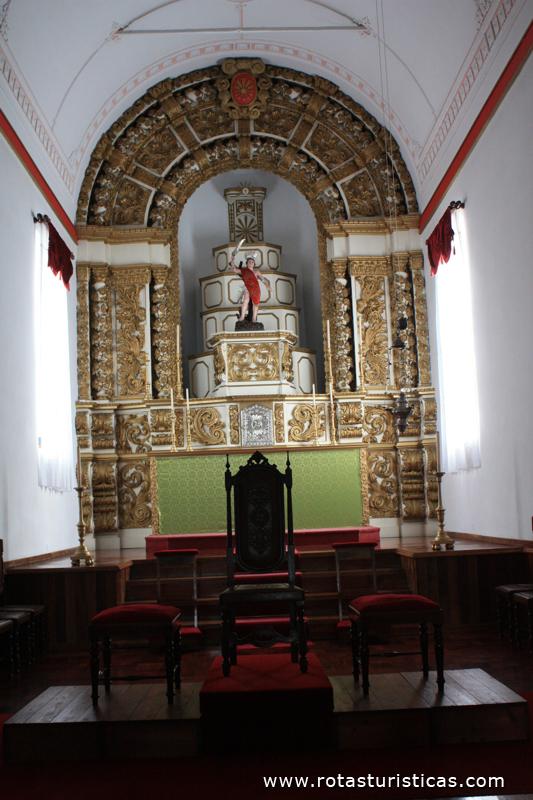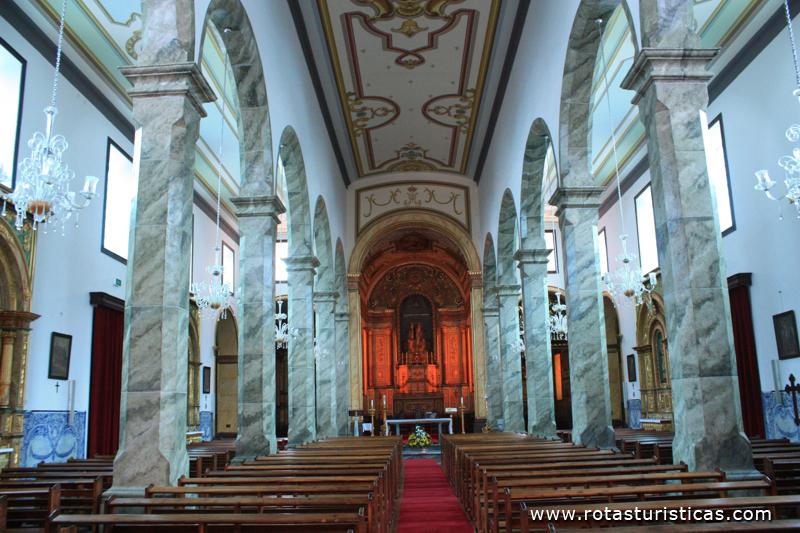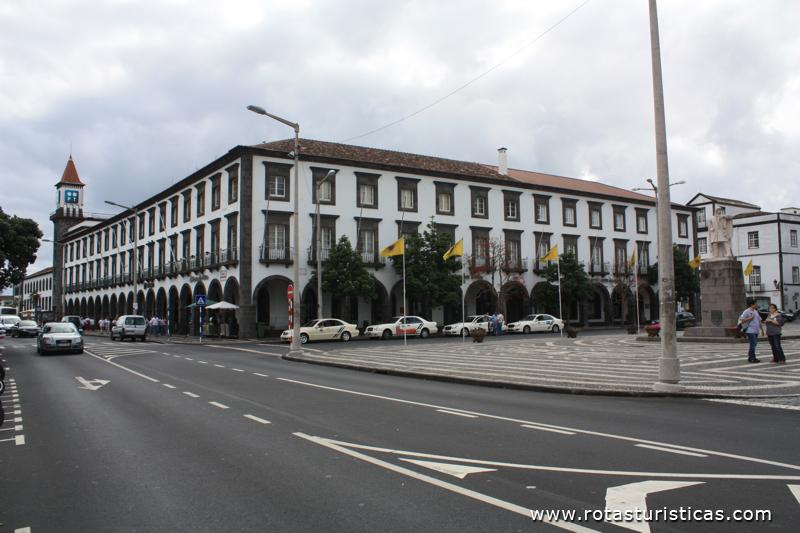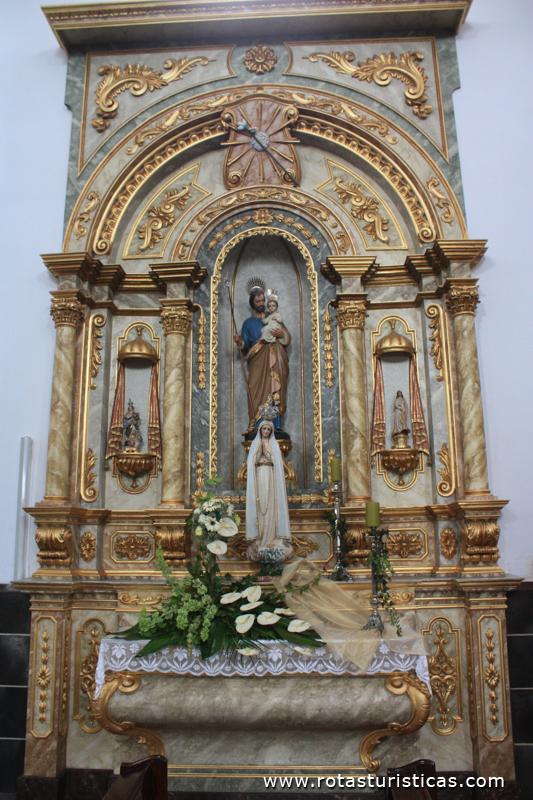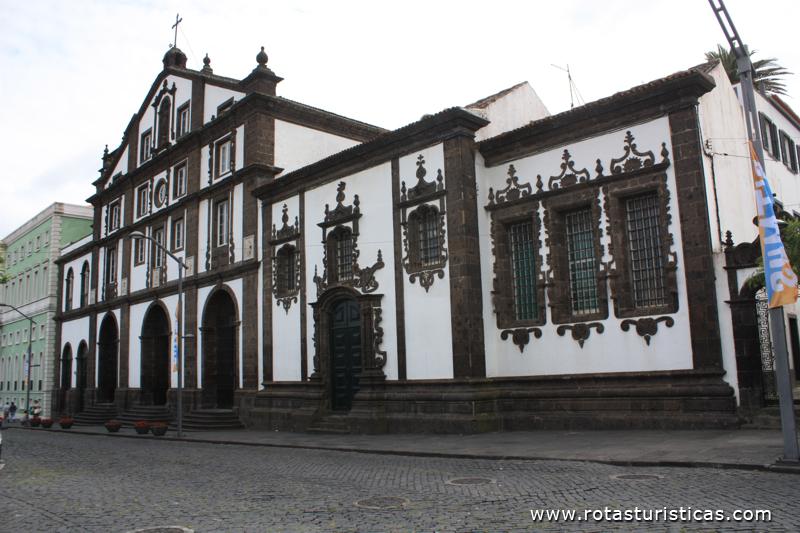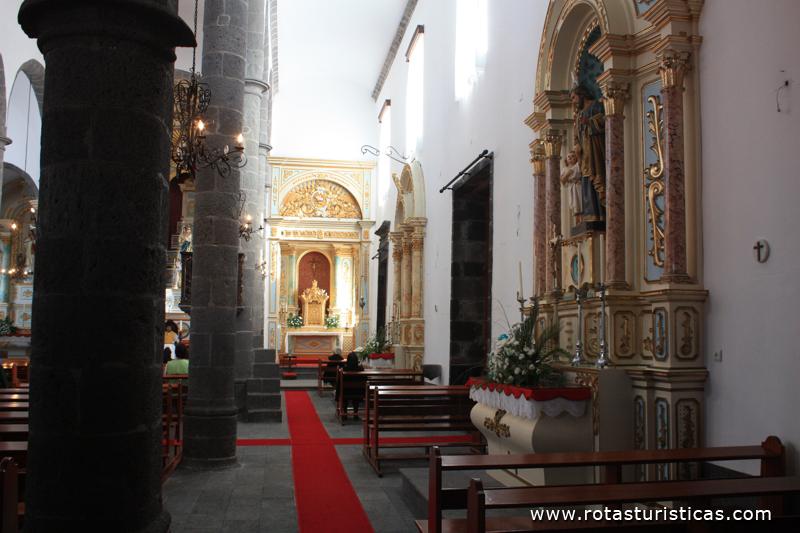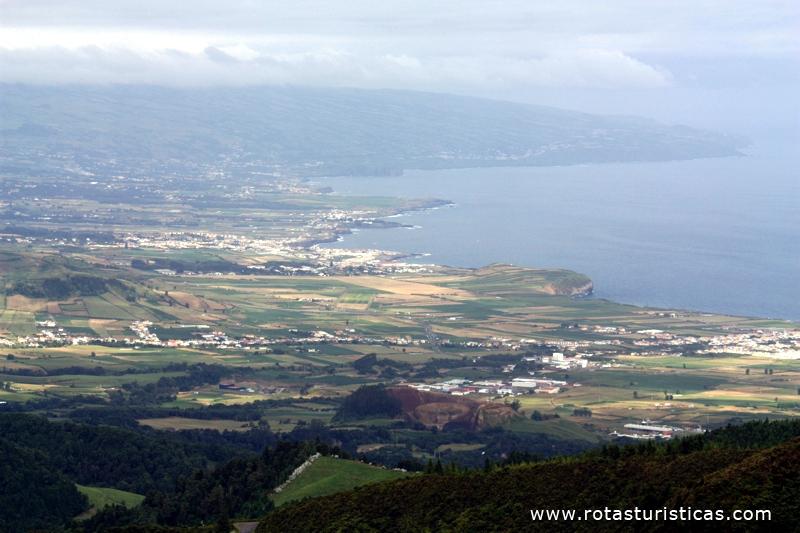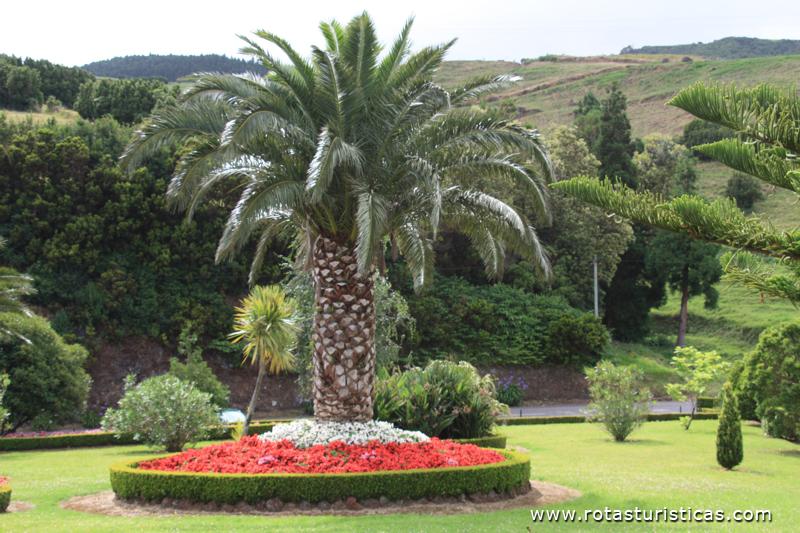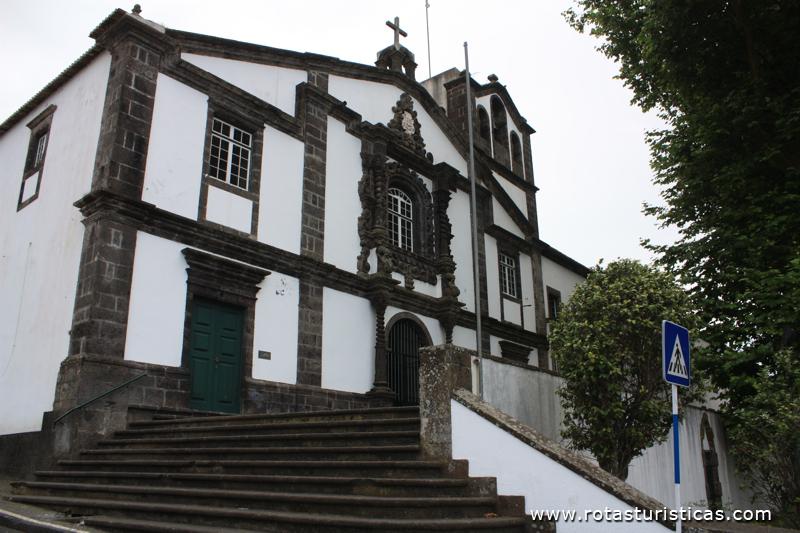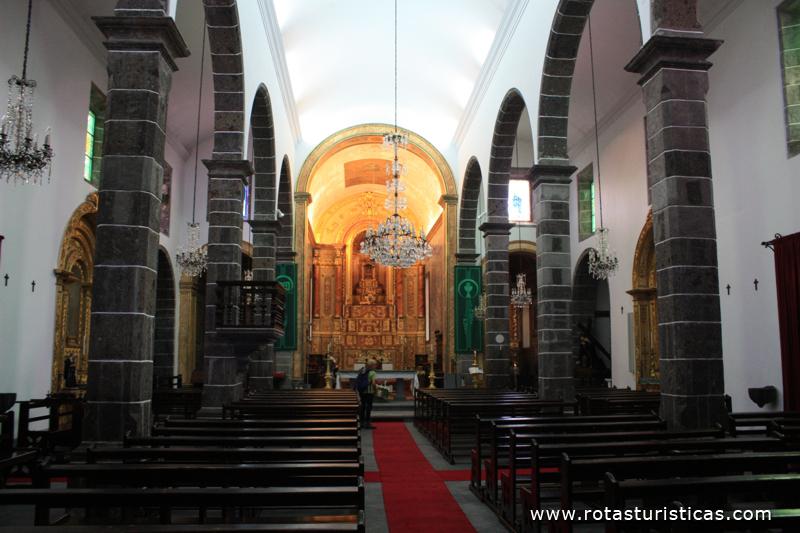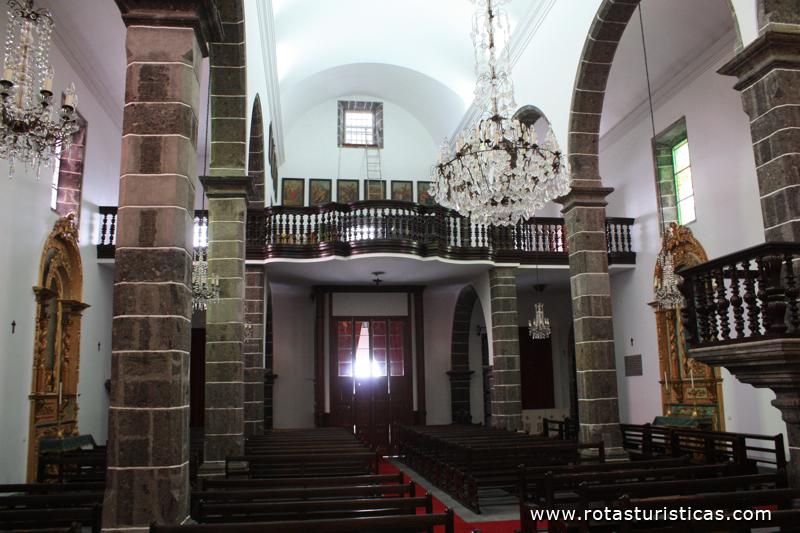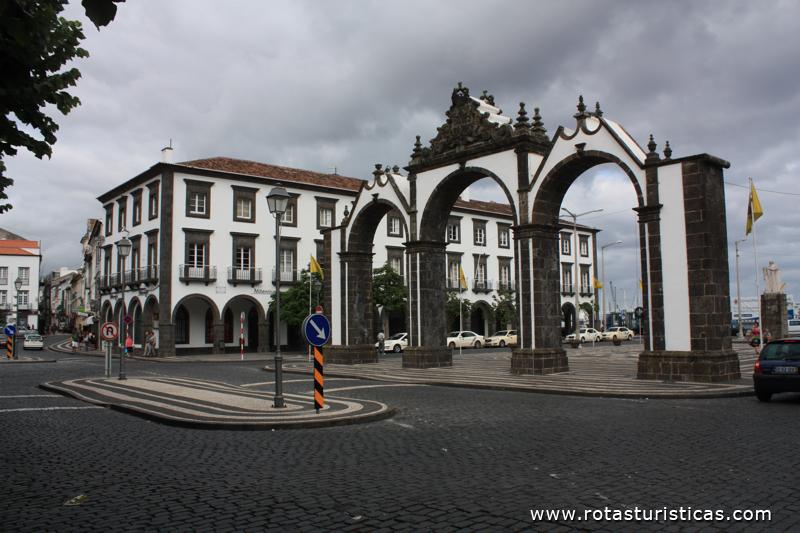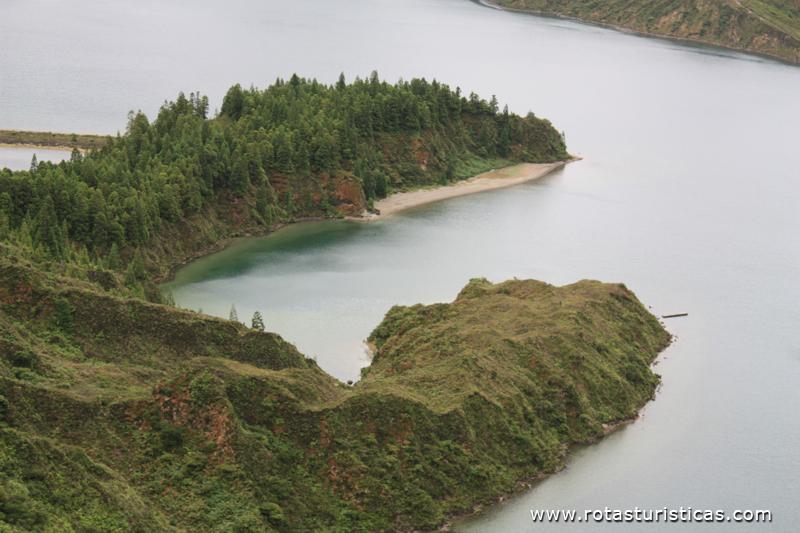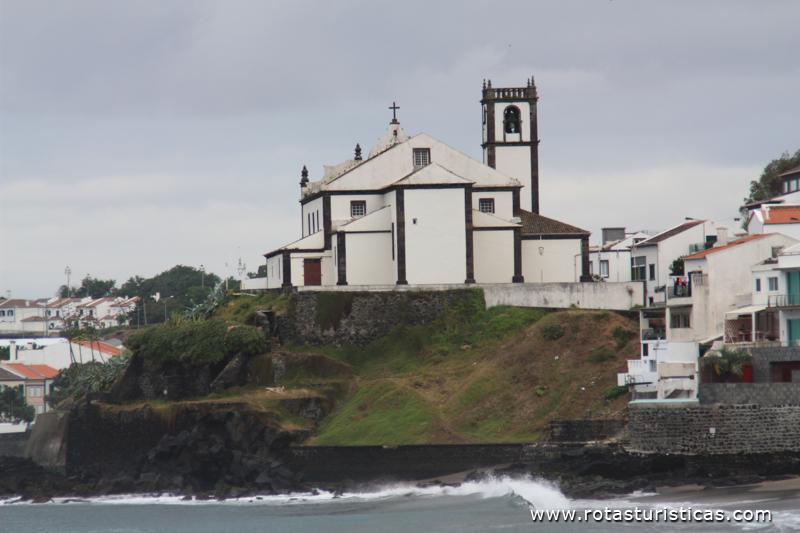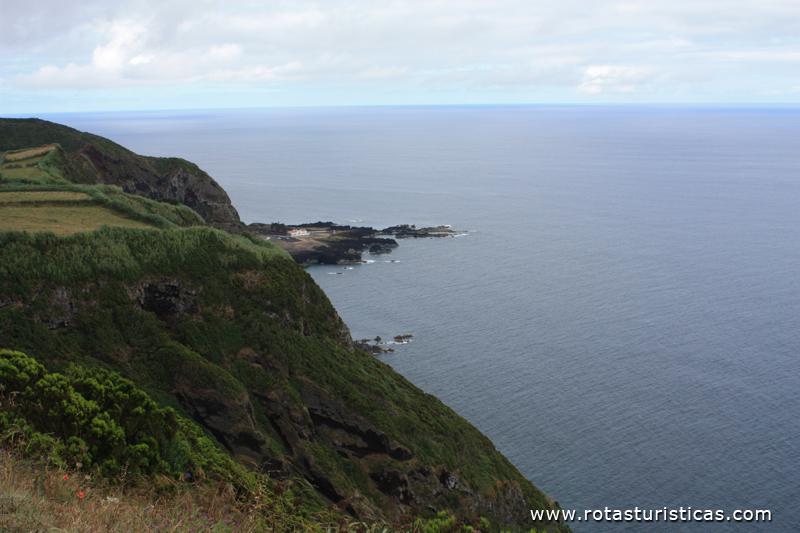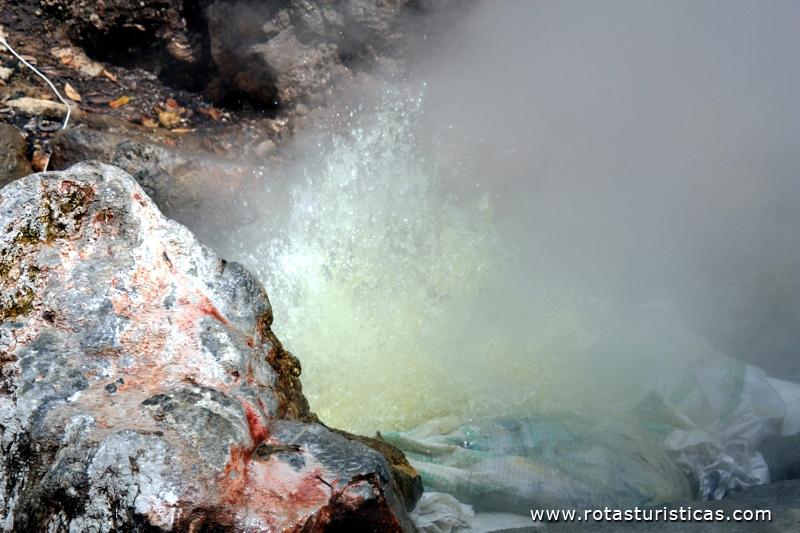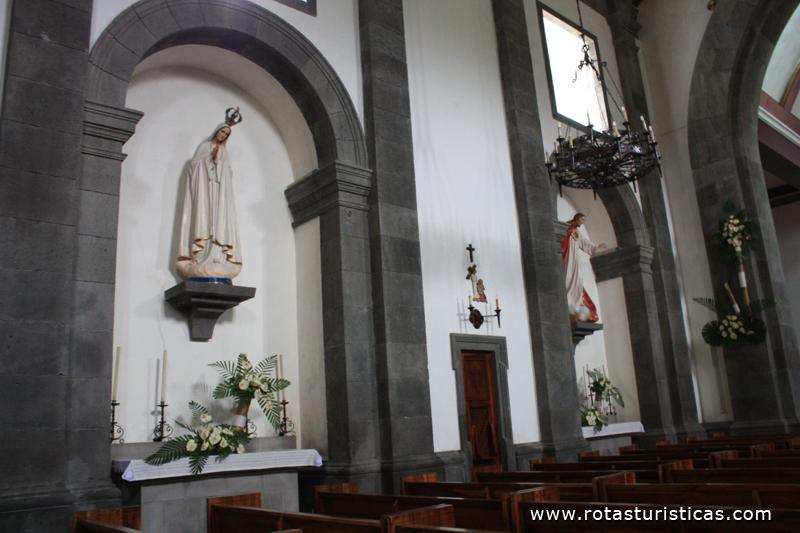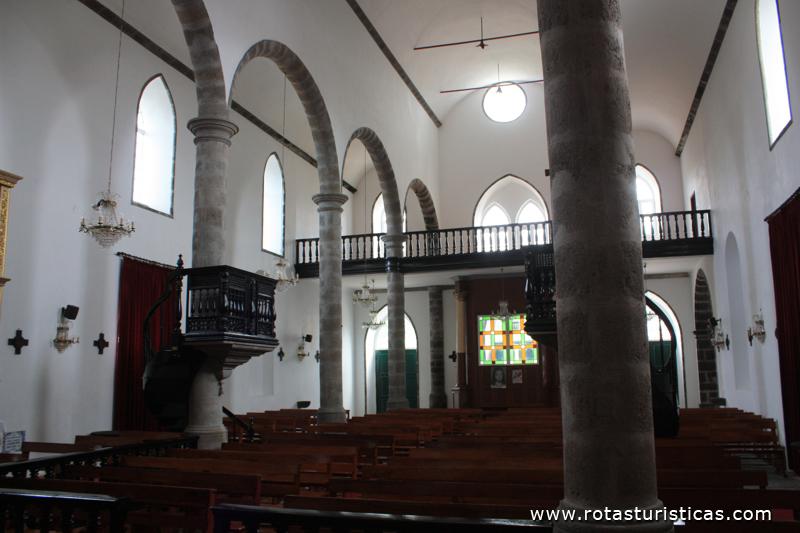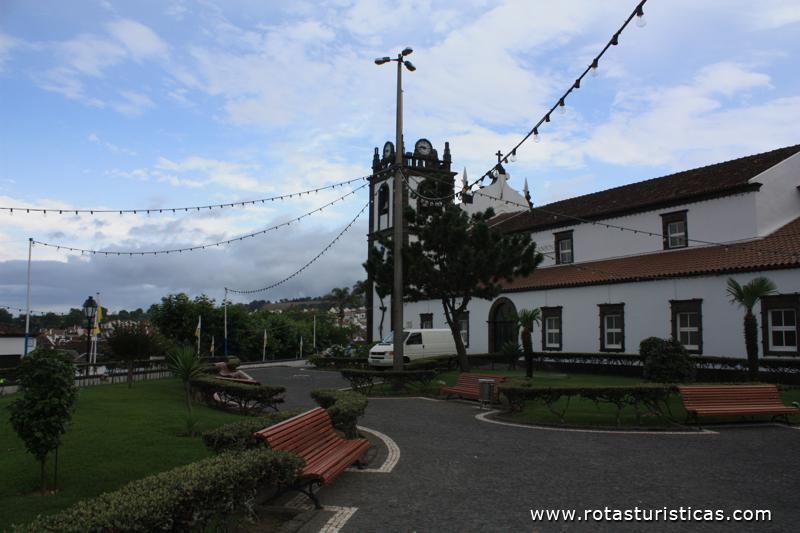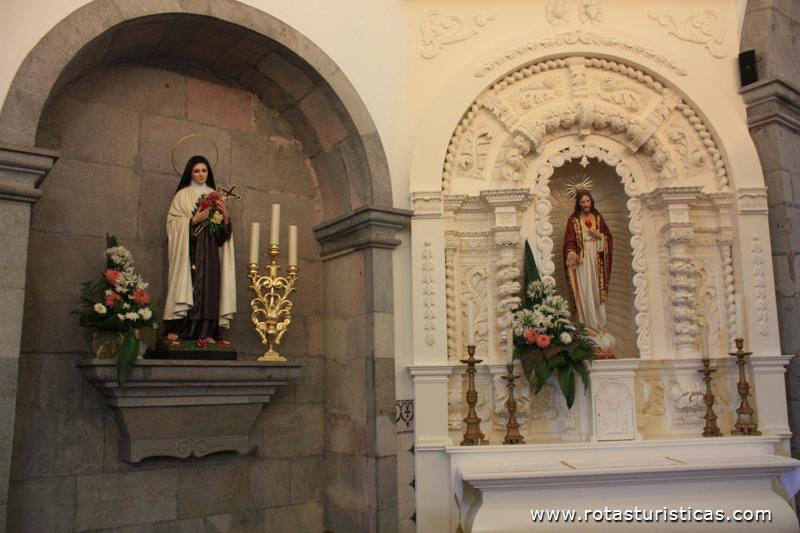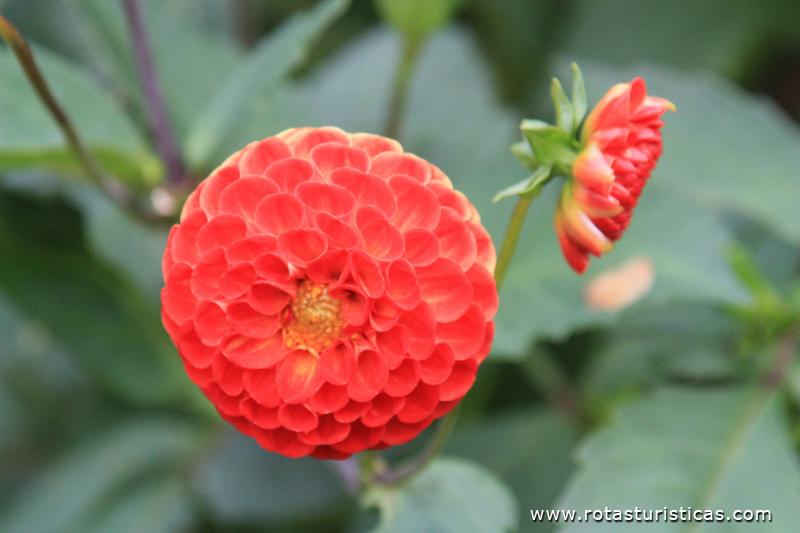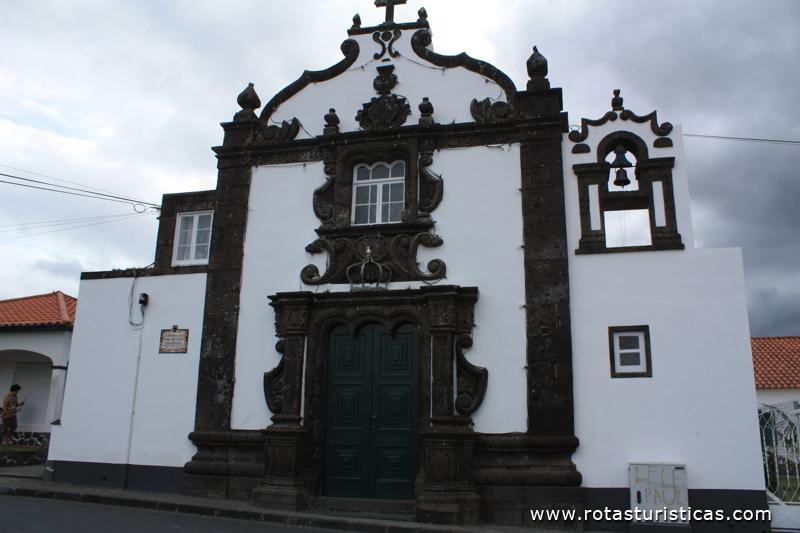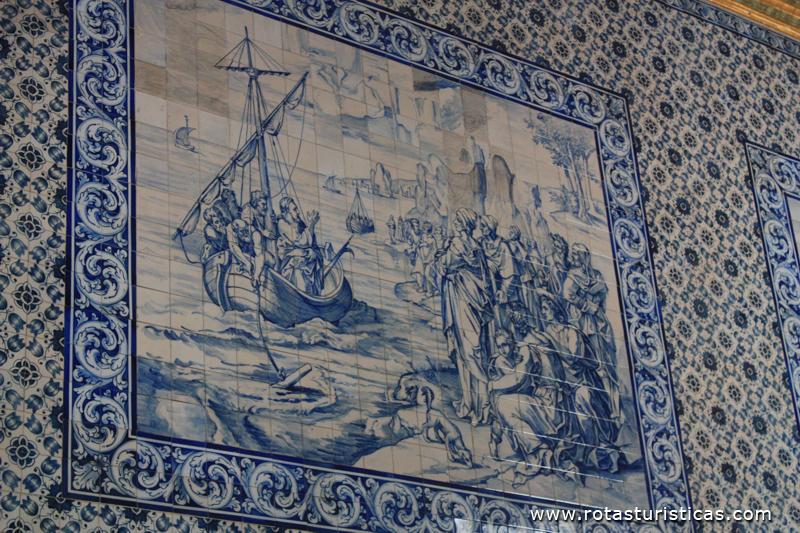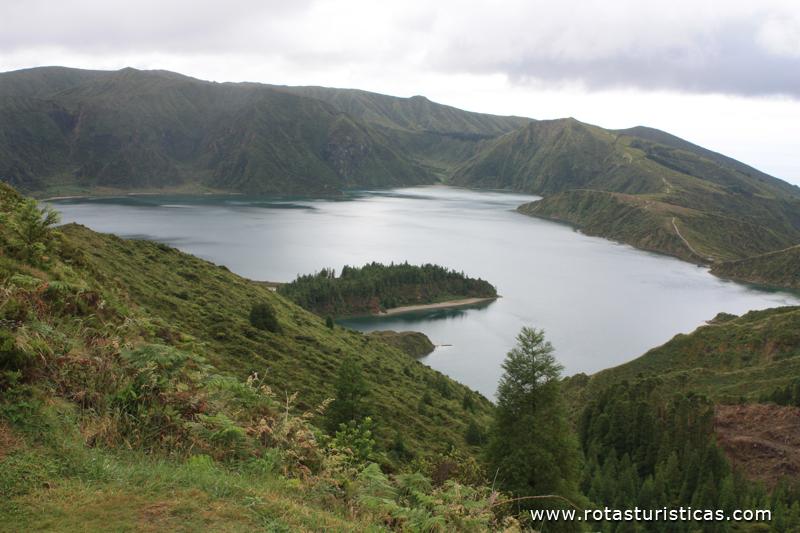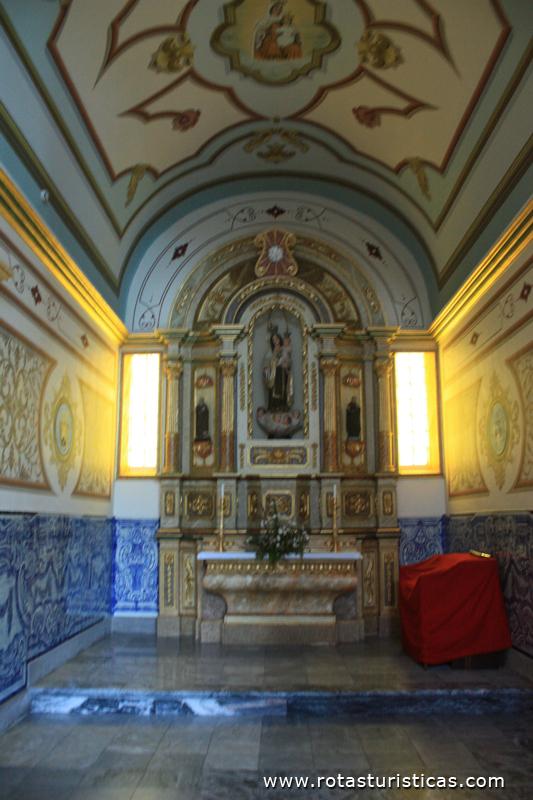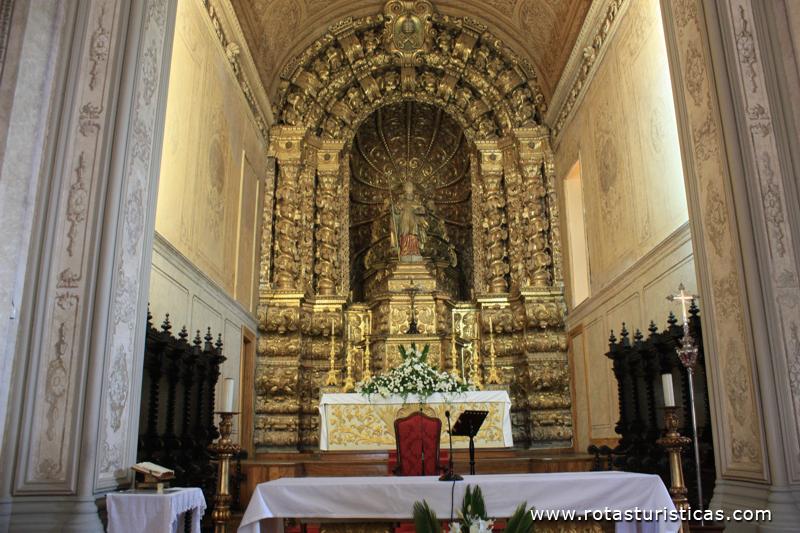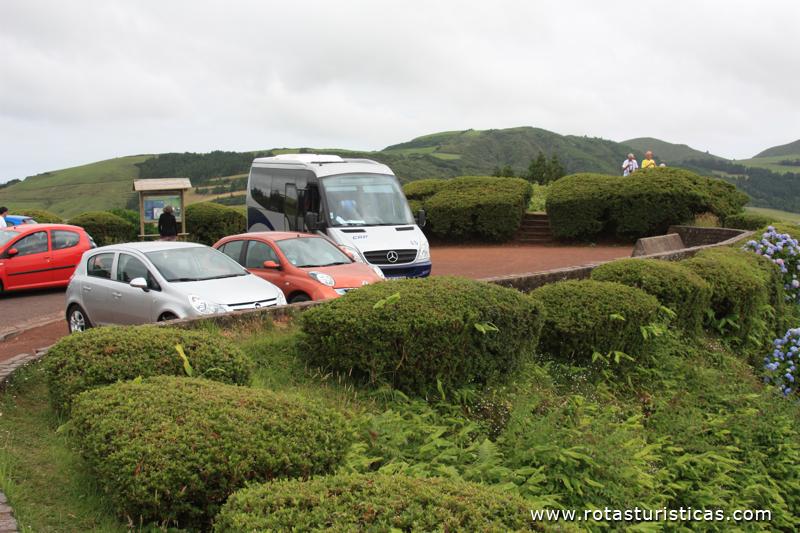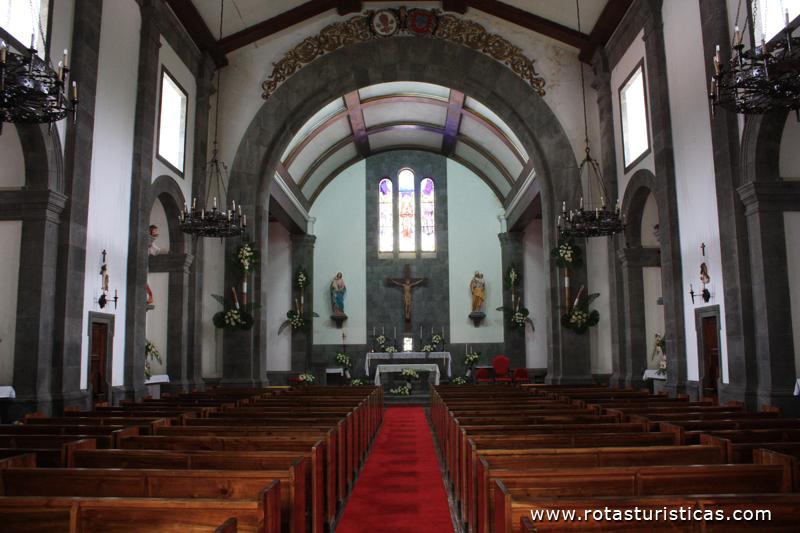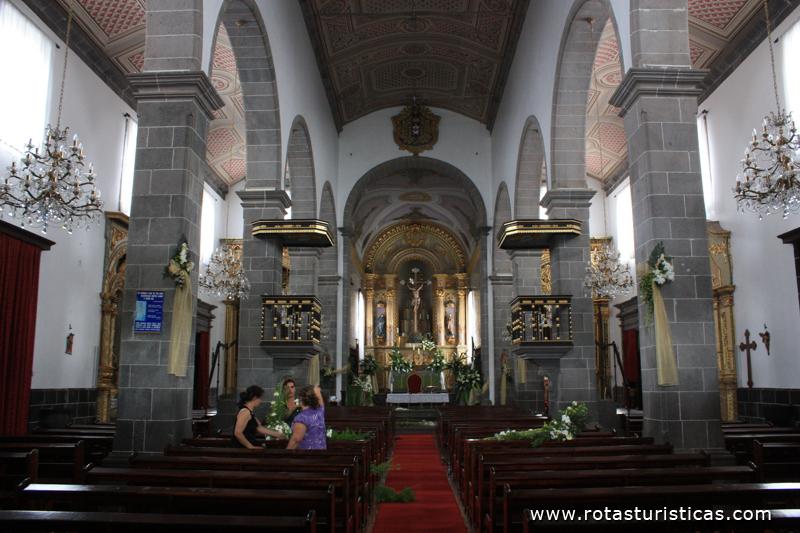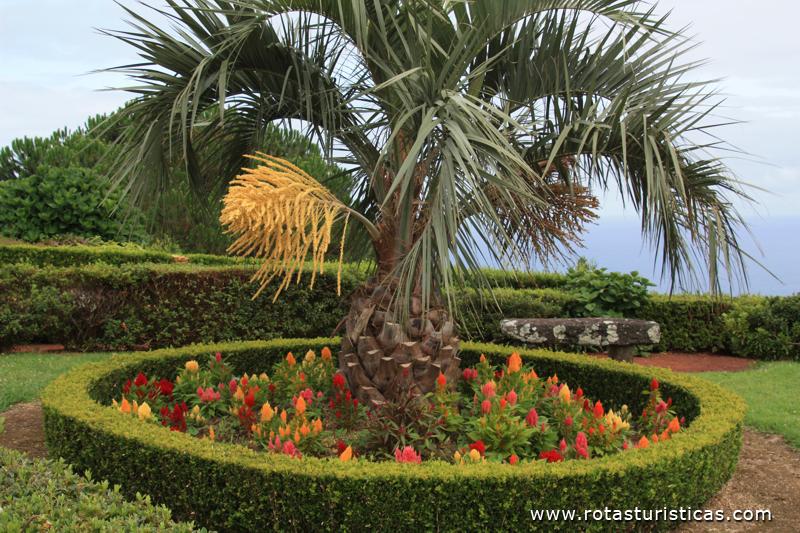Pictures of: São Miguel Island - Azores
Location map
Airports
Hotels and other Accommodation
Golf Courses
What to visit
Where to Eat
Where to have fun
Consulates & Embassies
World Nomads
The Travel Insurance with the largest coverage

The Travel Insurance with the largest coverage

Sao Miguel Island
São Miguel, also known as the Green Island, is the largest and most populous island of the Azores. It has an area of approximately 759 km.
Being the most complex and diversified island of the archipelago, due to the richness of the reliefs and the different types of human occupation it presents, São Miguel offers its visitors a diverse scenery, with beautiful lagoons, beaches, hills, mountains, green plains and the ever present blue ocean. The island is also known for the award-winning Terra Nostra Park, for its wonderful golf courses, for the majestic landscapes that can be observed from virtually any location and for the hospitality of its inhabitants.
São Miguel is the island with more tourist offer. The cosmopolitan city of Ponta Delgada offers visitors a mix of contemporary living and historical flavor. The monuments, the architecture of its centennial buildings, the parks and cobbled streets coexist with a modern Marina, good restaurants, shops, bars, cafes and seaside terraces.
The main activities in San Miguel include whale watching, swimming with dolphins, walking and hiking, diving, fishing, jeep tours, bird watching, sailing, swimming, golf and many other outdoor activities.
The weather is best between June and October, with the hottest months being July, August and September. From November to January it is also nice to be on the island, but temperatures drop. The rainiest period tends to be from February to May.
Being the most complex and diversified island of the archipelago, due to the richness of the reliefs and the different types of human occupation it presents, São Miguel offers its visitors a diverse scenery, with beautiful lagoons, beaches, hills, mountains, green plains and the ever present blue ocean. The island is also known for the award-winning Terra Nostra Park, for its wonderful golf courses, for the majestic landscapes that can be observed from virtually any location and for the hospitality of its inhabitants.
São Miguel is the island with more tourist offer. The cosmopolitan city of Ponta Delgada offers visitors a mix of contemporary living and historical flavor. The monuments, the architecture of its centennial buildings, the parks and cobbled streets coexist with a modern Marina, good restaurants, shops, bars, cafes and seaside terraces.
The main activities in San Miguel include whale watching, swimming with dolphins, walking and hiking, diving, fishing, jeep tours, bird watching, sailing, swimming, golf and many other outdoor activities.
The weather is best between June and October, with the hottest months being July, August and September. From November to January it is also nice to be on the island, but temperatures drop. The rainiest period tends to be from February to May.
Tourism
Convent and Chapel of Our Lady of Hope, known as Convent of Hope or simply Church of Santo Cristo. It houses the magnificent image of the Lord Santo Cristo dos Milagres, the patron of the largest religious festival in the Azores;
Palácio de Santana, a 19th century building, surrounded by beautiful gardens and currently the residence of the President of the Regional Government of the Azores (not always accessible to the public);
The Carlos Machado Museum, in Ponta Delgada, the oldest museum in the archipelago, contains valuable ethnographic pieces and important collections of painting, sculpture and photography, and offers permanent and temporary exhibitions;
Lagoa do Fogo. The visitor can reach this place by green paths and faces an untouched and majestic setting;
Chapel of Senhora da Paz - authentic Mariano Sanctuary built on a hill, offers a great view over Vila Franca do Campo and the island.
Furnas, a valley surrounded by green and flowering slopes. The Boiler area presents a unique scenario, with its openings in the earth where in several craters bubbles boiling water. In the Lagoa das Furnas area other boilers of the same type can be found, although they are used there for cooking purposes.
Parque Terra Nostra - behind the hotel with the same name, is one of the most beautiful parks in Portugal and known throughout Europe.
Northeast, one of the most beautiful municipalities of São Miguel. The viewpoints of Ponta da Madrugada, Ponta do Sossego, Salto da Farinha and Ponta do Estorninho, among others, deserve to be known to admire the flowers and the breathtaking landscapes of the north of the island;
Pico da Vara, the highest point of the island, with an altitude of 1105m, is a challenge of about an hour and a half on foot, by a path that offers a magnificent landscape of unspoiled nature.
Lagoa das Sete Cidades: two twin lagoons, of different colors, offer a unique spectacle, constituting the largest extinct volcano crater in the Azores, with 12 km of perimeter.
Several beaches in the whole island where you can swim, including Milícias, Pópulo, Ribeira Grande (beach of Santa Bárbara, a popular place among surfers), Agua D'Alto, Vinha d'Areia (Vila Franca do Campo), Moinhos ( Porto Formoso), Mosteiros and Ribeira Quente.
Poços de São Vicente - a natural swimming pool, with crystal clear water;
Termas da Ferraria - a natural spa with thermal waters and a natural swimming pool whose water reaches 40ºC, varying according to the tide time.
São Miguel is the island with the most varied range of activities, due to not only being the largest island, but also being a verdant landscape and full of beautiful beaches, lagoons, mountains and a land made for activities in nature.
Ponds and streams The streams between the thickly forested ravines with clear water reflect the green banks. One can fish trout, carp and pike.
The Lagoa das Sete Cidades is rich in carp and perch. In Lagoa do Fogo, trout and carp are abundant, while in Lagoa Rasa and São Brás they are the home of the bass. In Lagoa das Furnas, it is possible to fish trout, perch, carp and sandre.
The São Miguel underwater life is characterized by warm, transparent waters, with spectacular cliffs, valleys and craters. A rich and varied flora and fauna are attractions for those who are interested in diving and underwater observation. In S. Miguel you can find thousands of small paradises along the coast where you can enjoy all the charms of the sea, day or night. Privileged areas for underwater observation are Ponta da Galera, the coast in Feteiras area and the Ilheus of Vila Franca and Mosteiros. A ship called Dori found itself sunk near the port of Ponta Delgada, to a maximum depth of 20 meters, thus being easy to access to the common divers.
The most popular products in São Miguel revolve around pottery, ceramics, embroidery, cheese and pineapples, tea and tobacco.
Palácio de Santana, a 19th century building, surrounded by beautiful gardens and currently the residence of the President of the Regional Government of the Azores (not always accessible to the public);
The Carlos Machado Museum, in Ponta Delgada, the oldest museum in the archipelago, contains valuable ethnographic pieces and important collections of painting, sculpture and photography, and offers permanent and temporary exhibitions;
Lagoa do Fogo. The visitor can reach this place by green paths and faces an untouched and majestic setting;
Chapel of Senhora da Paz - authentic Mariano Sanctuary built on a hill, offers a great view over Vila Franca do Campo and the island.
Furnas, a valley surrounded by green and flowering slopes. The Boiler area presents a unique scenario, with its openings in the earth where in several craters bubbles boiling water. In the Lagoa das Furnas area other boilers of the same type can be found, although they are used there for cooking purposes.
Parque Terra Nostra - behind the hotel with the same name, is one of the most beautiful parks in Portugal and known throughout Europe.
Northeast, one of the most beautiful municipalities of São Miguel. The viewpoints of Ponta da Madrugada, Ponta do Sossego, Salto da Farinha and Ponta do Estorninho, among others, deserve to be known to admire the flowers and the breathtaking landscapes of the north of the island;
Pico da Vara, the highest point of the island, with an altitude of 1105m, is a challenge of about an hour and a half on foot, by a path that offers a magnificent landscape of unspoiled nature.
Lagoa das Sete Cidades: two twin lagoons, of different colors, offer a unique spectacle, constituting the largest extinct volcano crater in the Azores, with 12 km of perimeter.
Several beaches in the whole island where you can swim, including Milícias, Pópulo, Ribeira Grande (beach of Santa Bárbara, a popular place among surfers), Agua D'Alto, Vinha d'Areia (Vila Franca do Campo), Moinhos ( Porto Formoso), Mosteiros and Ribeira Quente.
Poços de São Vicente - a natural swimming pool, with crystal clear water;
Termas da Ferraria - a natural spa with thermal waters and a natural swimming pool whose water reaches 40ºC, varying according to the tide time.
São Miguel is the island with the most varied range of activities, due to not only being the largest island, but also being a verdant landscape and full of beautiful beaches, lagoons, mountains and a land made for activities in nature.
Ponds and streams The streams between the thickly forested ravines with clear water reflect the green banks. One can fish trout, carp and pike.
The Lagoa das Sete Cidades is rich in carp and perch. In Lagoa do Fogo, trout and carp are abundant, while in Lagoa Rasa and São Brás they are the home of the bass. In Lagoa das Furnas, it is possible to fish trout, perch, carp and sandre.
The São Miguel underwater life is characterized by warm, transparent waters, with spectacular cliffs, valleys and craters. A rich and varied flora and fauna are attractions for those who are interested in diving and underwater observation. In S. Miguel you can find thousands of small paradises along the coast where you can enjoy all the charms of the sea, day or night. Privileged areas for underwater observation are Ponta da Galera, the coast in Feteiras area and the Ilheus of Vila Franca and Mosteiros. A ship called Dori found itself sunk near the port of Ponta Delgada, to a maximum depth of 20 meters, thus being easy to access to the common divers.
The most popular products in São Miguel revolve around pottery, ceramics, embroidery, cheese and pineapples, tea and tobacco.
Gastronomy
In São Miguel, the old traditional recipes remain alive in succulent dishes like the sour soup (a type of soup), the "single sprouts" (prepared with cabbages), fervedouro, octopus stewed in wine of smell, "torresmos" of liver sauce, caldeirada of fish, limpet rice, trout stew and Afonso sauce limpets. To these they join the prepared stew in the Furnas, where the panela that contains meat, local sausages and vegetables, is buried in the ground, wrapped in a bag of cloth, or inside a pan, so that the volcanic heat does its work and, a few hours later, is ready to enchant the palate with its rich flavor.
Lobster, chipfish, santola and limpets satisfy the needs of seafood lovers. When it comes to cheese, São Miguel can offer a variety of fresh cheese, made with goat's milk and the famous cheese from the island, made from cow's milk and with a spicy taste when dry. The old traditional candy recipes make people happy with a sweet tooth. Examples are Vila Franca do Campo queijadas, Ribeira Grande concerts, Furnas yeast cake, as well as the nun's belly, soot mass, almond bugs and Capucho compote. The region of Caloura produces a wine, called wine of smell or strawberry, which is light and has a characteristic flavor. Passion fruit liqueurs and pineapple are nice ways to finish a meal.
Pineapple and Tea - One of the curiosities about São Miguel is the pineapple greenhouses, which produce tasty and sweet fruits throughout the year for markets in several European countries. The main concentrations of greenhouses are in the areas of Fajã de Baixo, Lagoa and Vila Franca do Campo.
Tea, a delicious drink brought from China, is also produced in plantations that attract attention because of the view over the lovely green tea shrubs that cover hills and valleys, divided into fields by hedges of araucarias and Japanese cedars.
The growth of the Tea began in the late nineteenth century, and in 1878 two Chinese came to San Miguel to teach the islanders the complex tasks involved in its preparation. The main plantations are located in Gorreana, next to the old Chapel of the Lady of the Rescue.
Lobster, chipfish, santola and limpets satisfy the needs of seafood lovers. When it comes to cheese, São Miguel can offer a variety of fresh cheese, made with goat's milk and the famous cheese from the island, made from cow's milk and with a spicy taste when dry. The old traditional candy recipes make people happy with a sweet tooth. Examples are Vila Franca do Campo queijadas, Ribeira Grande concerts, Furnas yeast cake, as well as the nun's belly, soot mass, almond bugs and Capucho compote. The region of Caloura produces a wine, called wine of smell or strawberry, which is light and has a characteristic flavor. Passion fruit liqueurs and pineapple are nice ways to finish a meal.
Pineapple and Tea - One of the curiosities about São Miguel is the pineapple greenhouses, which produce tasty and sweet fruits throughout the year for markets in several European countries. The main concentrations of greenhouses are in the areas of Fajã de Baixo, Lagoa and Vila Franca do Campo.
Tea, a delicious drink brought from China, is also produced in plantations that attract attention because of the view over the lovely green tea shrubs that cover hills and valleys, divided into fields by hedges of araucarias and Japanese cedars.
The growth of the Tea began in the late nineteenth century, and in 1878 two Chinese came to San Miguel to teach the islanders the complex tasks involved in its preparation. The main plantations are located in Gorreana, next to the old Chapel of the Lady of the Rescue.
Weather
Like the other islands in the archipelago, the climate in São Miguel is influenced by the current of the Gulf. The Anti-Cyclone of the Azores acts as a moderating force on the island, maintaining temperatures between 14ºC (57ºF) and 27ºC (80ºF) throughout the year. Given its location, the island is subject to storms, strong winds and high precipitation during the winter. The existence of areas with micro-climate, such as Porto Formoso, Capelas and Caloura, there is almost always a place where the sun shines.
Other tourist destinations in:
Portugal
Portugal
Other world tourist destinations
Why to book with FIND HOTEL ONLINE
The best prices
Our partnerships with the world´s largest operators offer research on the best market prices.
More options
At Rotas Turisticos you can book the hotel, buy the air ticket, book the transfer from the airport to the hotel and vice versa, book the local excursions, rent the car, take travel insurance and consult the places to visit and where to go.
Holiday Tips & Destinations
Hundreds of holiday destinations with all the options that allow you to easily choose the destination that best suits your dream vacation.
FIND HOTEL ONLINE
Links


